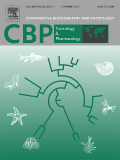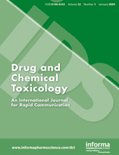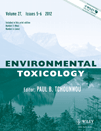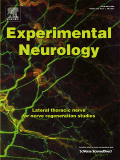
NEUROTOXICOLOGY
Scope & Guideline
Your Gateway to Cutting-edge Research in Neurotoxicology
Introduction
Aims and Scopes
- Neurotoxic Mechanisms:
Research investigating the biochemical and molecular pathways through which various substances cause neurotoxicity, including oxidative stress, inflammation, and apoptosis. - Developmental Neurotoxicity:
Studies focusing on the effects of neurotoxic substances during critical developmental periods, examining how early exposures can lead to long-term neurobehavioral deficits. - Environmental Neurotoxicants:
Exploration of the impact of environmental pollutants such as heavy metals, pesticides, and air pollutants on neural health and functionality. - Pharmacological Neurotoxicity:
Research assessing the neurotoxic effects of pharmaceutical agents, including anesthetics and chemotherapy drugs, and their implications for clinical practice. - Neuroprotective Strategies:
Investigation of potential therapeutic interventions and natural compounds that may mitigate or prevent neurotoxic effects. - Model Organisms in Neurotoxicology:
Utilization of various animal models, including rodents and invertebrates like Drosophila melanogaster, to study neurotoxic effects and mechanisms.
Trending and Emerging
- Sex-Specific Neurotoxicity:
An increasing number of studies are focusing on how neurotoxic effects can differ based on sex, highlighting the need for gender considerations in neurotoxicology research. - Impact of Environmental Exposures:
Growing attention is being paid to the neurotoxic effects of environmental pollutants, particularly those related to climate change and urbanization, including air pollution and heavy metals. - Neuroinflammation as a Mechanism:
Research is increasingly identifying neuroinflammation as a critical mechanism underlying neurotoxic effects, linking it to various neurodegenerative diseases. - Functional Neuroimaging Studies:
There is a trend towards using advanced imaging techniques to assess the neurotoxic impacts of substances on brain structure and function, providing insights into the mechanisms of neurotoxicity. - Interdisciplinary Approaches:
Emerging studies are integrating fields such as epigenetics, microbiome research, and systems biology to understand the multifaceted nature of neurotoxic effects. - Application of Artificial Intelligence:
The use of AI and machine learning to predict neurotoxic outcomes and analyze large datasets from neurotoxicology studies is becoming increasingly prevalent.
Declining or Waning
- Traditional Pharmacological Agents:
Research on classic pharmacological neurotoxins, such as older anesthetics or opioids, seems to have waned in favor of newer substances and environmental exposures. - Generalized Neurotoxicity Studies:
There is a noticeable decline in studies that broadly assess neurotoxicity without focusing on specific mechanisms or pathways, likely due to the increasing complexity of neurotoxicology. - Single Agent Studies:
The trend is moving away from studies examining the effects of single neurotoxic agents, with a growing focus on the interactions between multiple agents and their cumulative effects.
Similar Journals

ARCHIVES OF TOXICOLOGY
Uncovering Insights, Shaping SafetyARCHIVES OF TOXICOLOGY is a prestigious journal published by Springer Heidelberg, dedicated to advancing research in the field of toxicology and related disciplines. With a distinguished history dating back to 1930, this journal has continuously provided vital insights and groundbreaking studies, making it a cornerstone in the areas of health, toxicology, and medicine. Recognized for its high impact, it occupies a top-ranking position in Scopus, with remarkable quartile placements in 2023, categorizing it as Q1 in Health, Toxicology and Mutagenesis, and Q1 in Medicine (Miscellaneous). The journal highlights critical research and innovative methodologies, appealing to a diverse audience of researchers, professionals, and students committed to understanding the complexities of toxic substances and their implications for public health and environmental safety. The journal does not currently offer open access, allowing for a more traditional but rigorous peer-review process that ensures the quality and integrity of every published article. Join the global discourse in toxicological science with ARCHIVES OF TOXICOLOGY, where every contribution furthers the understanding of safety and toxicity in our world.

NEUROCHEMICAL RESEARCH
Unlocking the mysteries of brain function and health.NEUROCHEMICAL RESEARCH, published by Springer/Plenum Publishers, is a pivotal journal in the fields of biochemistry, neuroscience, and cellular and molecular studies. With an impressive impact factor that positions it within the prestigious Q1 category in Biochemistry and Medicine and Q2 in Cellular and Molecular Neuroscience, it provides a robust platform for the dissemination of cutting-edge research findings. Since its inception in 1976, the journal has played a crucial role in bridging the gap between neurochemical processes and neurological health, making significant contributions to our understanding of brain function and disease. Researchers and professionals are encouraged to engage with a wealth of high-quality articles that not only advance the field but also inform clinical practices. Located in the heart of New York, the journal continues to uphold its reputation as a leader in promoting innovative research that is essential for both academic and applied sciences.

COMPARATIVE BIOCHEMISTRY AND PHYSIOLOGY C-TOXICOLOGY & PHARMACOLOGY
Pioneering Research in Pharmacology and Toxicological ScienceComparative Biochemistry and Physiology C-Toxicology & Pharmacology, published by Elsevier Science Inc, stands as a prominent resource in the fields of pharmacology, toxicology, and biochemical research. With its ISSN 1532-0456 and E-ISSN 1878-1659, this journal has carved out a significant niche, focusing on the comparative aspects of biochemical and physiological data across various species. Recognized for its impact in diverse fields, it boasts a Q1 ranking in Animal Science and Zoology, Aquatic Science, Health, Toxicology and Mutagenesis, alongside respectable standings in other related disciplines. Researchers and professionals can leverage this publication to access high-quality, peer-reviewed studies that advance the understanding of biochemical processes and their toxicological implications. The journal aims to bridge the gap between laboratory findings and real-world applications, fostering an environment for interdisciplinary collaboration. For academics seeking to enhance their knowledge or contribute to this impactful field, Comparative Biochemistry and Physiology C-Toxicology & Pharmacology serves as an invaluable platform.

NEUROTOXICITY RESEARCH
Charting New Frontiers in Neurotoxic ResearchNEUROTOXICITY RESEARCH is a premier journal published by SPRINGER, focusing on the critical and evolving field of neurotoxicology. With an ISSN of 1029-8428 and an E-ISSN of 1476-3524, this journal serves as a vital platform for researchers, professionals, and students dedicated to understanding the impact of toxic substances on nervous system health. Established in 1999, NEUROTOXICITY RESEARCH has consistently contributed significant findings and discussions that influence both theoretical and applied neuroscience. The journal's impressive Q2 ranking in both Neuroscience (miscellaneous) and Toxicology categories, alongside its strong percentile rankings in Scopus, underscores its relevance and quality in the academic community. While this journal is not open access, it remains a critical resource for those seeking interdisciplinary insights into the mechanisms of neurotoxicity. The objective of NEUROTOXICITY RESEARCH is to elucidate the intricate interactions between environmental and chemical agents and their neurotoxic effects, guiding future research and policies aimed at safeguarding neurological health. Based in the United States at ONE NEW YORK PLAZA, SUITE 4600, NEW YORK, NY 10004, this journal is committed to advancing the understanding of neurotoxic mechanisms and fostering collaborative efforts within the scientific community.

ECOTOXICOLOGY
Cutting-edge research for a sustainable future.ECOTOXICOLOGY is a prominent journal published by Springer, focusing on the interdisciplinary field of ecotoxicology—a critical area dedicated to understanding the impact of chemicals and pollutants on ecosystems and human health. Established in 1992, the journal has steadily gained recognition and currently holds a strong position in the academic landscape, featuring a Q2 ranking across multiple categories including Health, Toxicology and Mutagenesis, and Environmental Science. With its rigorous peer-review process and commitment to high-quality research, ECOTOXICOLOGY serves as an essential platform for disseminating innovative studies, systematic reviews, and policy analyses, thereby contributing significantly to environmental management and law. Although it does not offer open access, authors benefit from the reach and reputation of Springer, ensuring their work is seen by an engaged audience of researchers, professionals, and academics. As the field of ecotoxicology continues to evolve, ECOTOXICOLOGY remains at the forefront, addressing key challenges and solutions essential for safeguarding our environment and public health.

Toxics
Pioneering research in toxicology and environmental health.Toxics is a leading international journal published by MDPI that has been dedicated to advancing the knowledge in the fields of toxicology, environmental health, and chemical safety since its inception in 2013. With an impressive Open Access model, it ensures that all research findings are readily available to a global audience, fostering collaboration and innovation across academia and industry. The journal is esteemed for its rigorous peer-review process and holds notable rankings, including Q1 status in Chemical Health and Safety and Q2 in both Health, Toxicology and Mutagenesis and Toxicology, reflecting its impact on critical research areas. Based in Basel, Switzerland, Toxics provides a platform for researchers, professionals, and students to disseminate significant findings on the implications of toxic substances in health and the environment, aiming to improve public health outcomes and inform regulatory decisions. With its ongoing commitment to high-quality research and relevant access options, Toxics continues to be an essential resource in the domain of toxicology and environmental sciences.

DRUG AND CHEMICAL TOXICOLOGY
Bridging disciplines for safer environments.Drug and Chemical Toxicology is a well-respected journal in the fields of toxicology, pharmacology, and public health, published by Taylor & Francis Ltd. Since its inception in 1978, this journal has diligently explored the effects and mechanisms of chemical exposures on health and the environment, fulfilling a crucial role in advancing scientific understanding and safeguarding public health. The journal is indexed across prestigious databases and features an impressive array of articles categorized within the Q2 and Q3 quartiles across various categories in 2023, reflecting its significance in Chemical Health and Safety as well as Environmental and Occupational Health disciplines. With an extensive reach and a focus on interdisciplinary research, Drug and Chemical Toxicology offers a rich repository of original research, reviews, and methodological advancements, catering to a diverse audience of researchers, professionals, and students dedicated to the betterment of safety and health standards. Although not an open-access publication, its articles are widely accessible to the academic community, ensuring that critical innovations and insights are shared for the greater good.

Toxicology and Environmental Health Sciences
Connecting Toxicology Insights with Public Health StrategiesToxicology and Environmental Health Sciences is a peer-reviewed journal published by the Korean Society for Environmental Risk Assessment & Health Science, dedicated to advancing the fields of toxicology and environmental health. With an ISSN of 2005-9752 and E-ISSN 2233-7784, this journal serves as a vital platform for researchers, professionals, and students seeking to explore the intricate relationships between environmental risks and public health. Operating from South Korea, it has a converged years span from 2009 to 2024, and currently holds a respectable Q3 quartile ranking in both Health, Toxicology and Mutagenesis and Toxicology. This positions the journal within a critical space for those invested in understanding and mitigating environmental health challenges. Although not an open-access journal, it continues to foster high-impact research, contributing to a better understanding of toxicological sciences and environmental health dynamics. Engage with the latest findings and discussions that shape this evolving field through the insightful articles published herein, reinforcing its importance as a resource for scholars and practitioners alike.

ENVIRONMENTAL TOXICOLOGY
Exploring Toxicology for a Sustainable FutureENVIRONMENTAL TOXICOLOGY, published by Wiley, is a premier academic journal dedicated to the multifaceted study of toxic substances in the environment and their effects on human health and ecosystems. With the ISSN 1520-4081 and E-ISSN 1522-7278, this journal holds a prestigious position in the field, being ranked in the Q1 category across various relevant disciplines, including Health, Toxicology and Mutagenesis, and Management, Monitoring, Policy and Law. The journal regularly publishes high-quality research articles, reviews, and policy discussions aimed at understanding the implications of environmental toxins from 1980 to the present, contributing to the body of knowledge critical for the safety and sustainability of our environment. Researchers and professionals will find a treasure trove of information that not only highlights current trends and methodologies but also sets the stage for future advancements in toxicology. As a key resource, it provides valuable insights necessary for policy-making, environmental management, and public health, reinforcing its significance in the ever-evolving fields of toxicology and environmental science.

EXPERIMENTAL NEUROLOGY
Transforming Insights into Neurological Understanding.EXPERIMENTAL NEUROLOGY is a premier academic journal published by Academic Press Inc, Elsevier Science, focusing on advancements in the fields of Developmental Neuroscience and Neurology. With an impressive Impact Factor and ranked in the Q1 quartile of both categories—positioning it among the top-tier journals—this publication has established itself as a vital resource for researchers, clinicians, and students alike. Since its inception in 1959, it has fostered the dissemination of cutting-edge research and innovative approaches to understanding neurological function and related disorders. While EXPERIMENTAL NEUROLOGY currently operates under a subscription access model, its rich archives and ongoing contributions to the field continue to inspire and inform the next generation of neurobiologists. The journal also boasts a high ranking in Scopus, placing fourth in Developmental Neuroscience and twentieth in Neurology, indicating its robust influence and scholarly significance. For those committed to advancing knowledge in these critical areas, EXPERIMENTAL NEUROLOGY is an indispensable platform for inquiry and discovery.